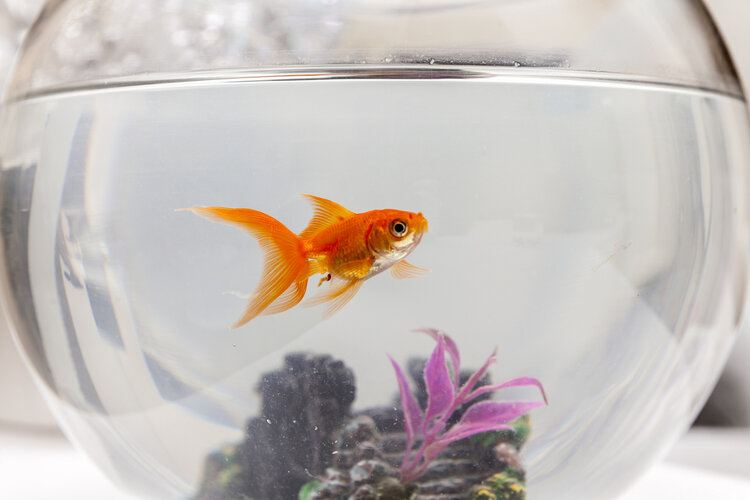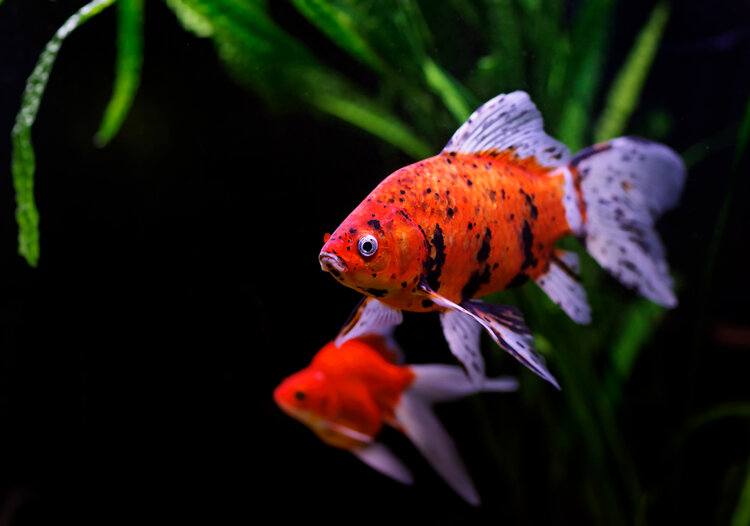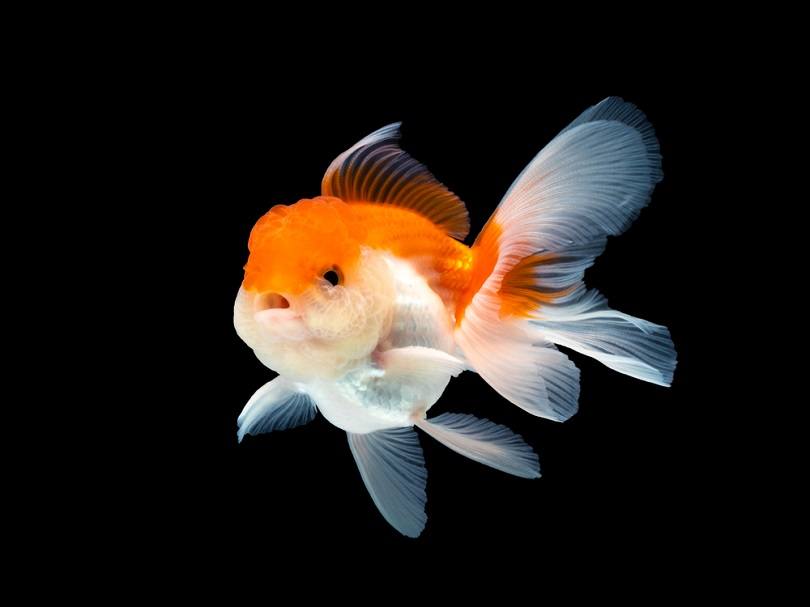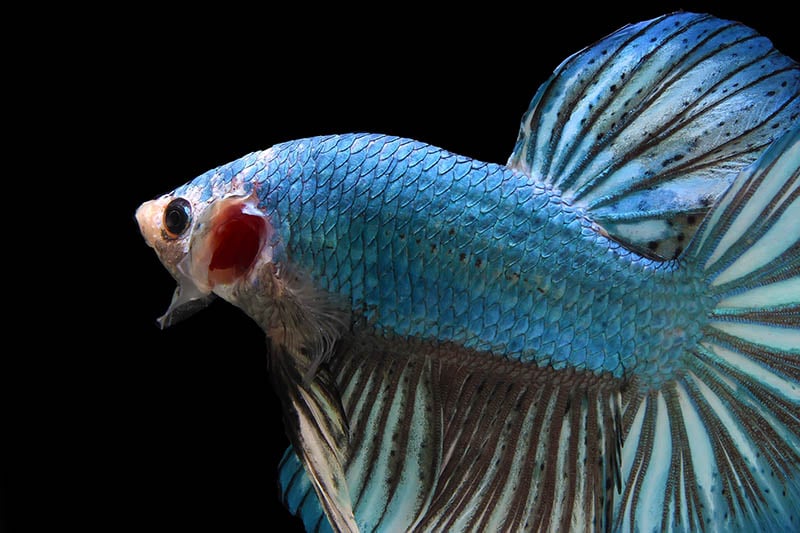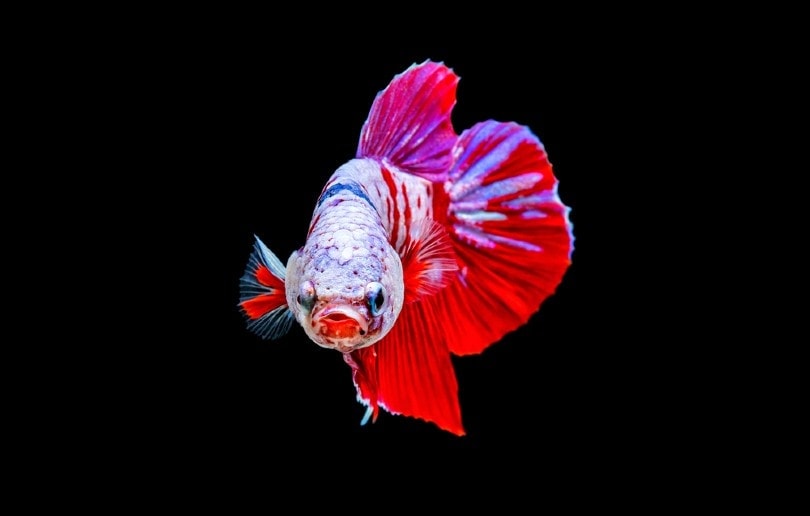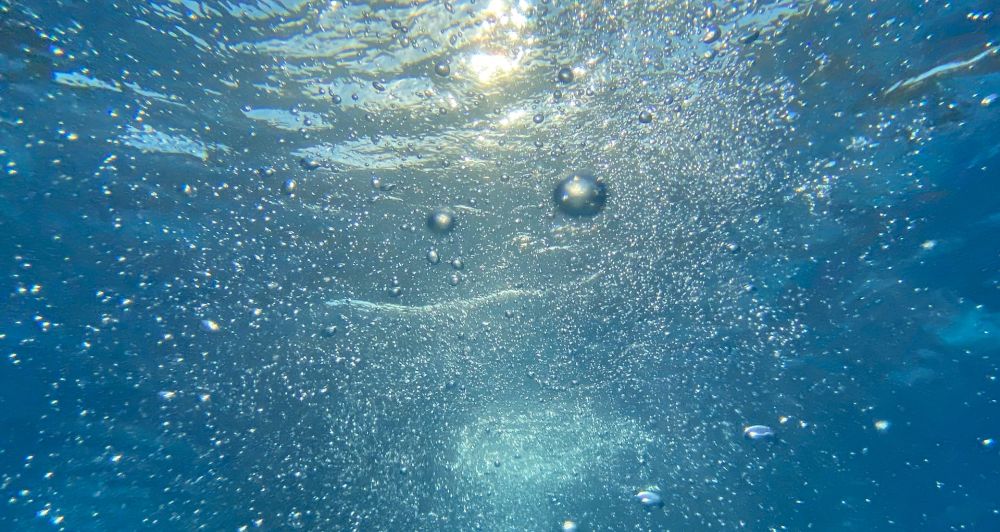Java Moss: Care Guide, Tips, Planting & Growing

Updated on
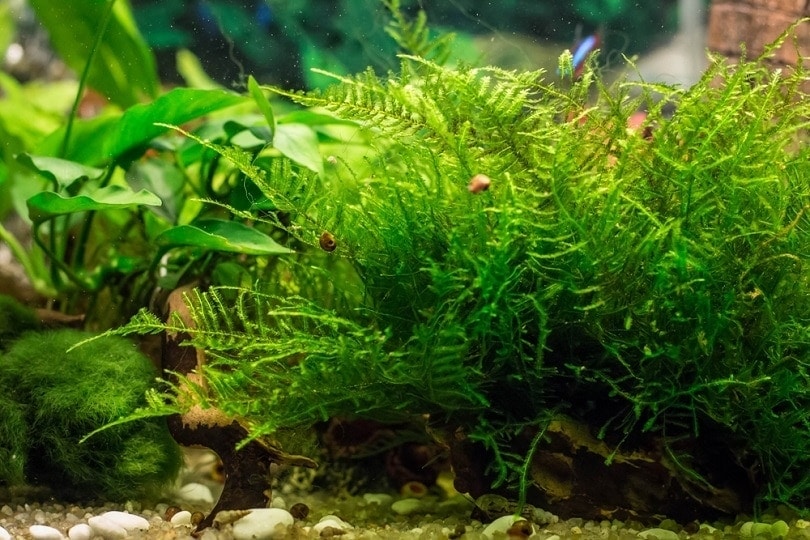
Java moss is a beautiful aquatic and semi-aquatic plant that can serve a variety of purposes in your tank, from a fry nursery to a shrimp haven to a water detoxifier. It creates interest and can help you accomplish an aged or established aesthetic in your tank.
Many fish will not eat or even notice Java moss, making it a nice choice for tanks with destructive fish like goldfish and cichlids. It can survive even in inhospitable environments, making it a nearly destructive aquarium addition.
Java moss is considered a very easy aquarium plant to keep, and it is easy to propagate, so you’ll never run out if you take care of it. Here are the things you need to know about Java moss.
Useful Information About Java Moss
| Family Name: | Hypnaceae |
| Common Names: | Java moss, Taiwan moss, willow moss, mini moss, triangular moss |
| Origin: | Southeast Asia |
| Color: | Light to dark green |
| Size: | 4–10 inches tall
4 inches wide |
| Growth Rate: | Slow to moderate |
| Care Level: | Very easy |
| Lighting: | Low to high |
| Water Conditions: | 59–86˚F
pH 5.0–8.0 |
| Minimum Tank Size: | 5 gallons |
| Supplements: | None |
| Placement: | Foreground |
| Propagation: | Cuttings |
| Compatibility: | Freshwater tanks, brackish tanks |
Java Moss Appearance

Java moss is a lovely moss, reaching up to 10 inches in height, but stays around 4 inches on average. How leggy Java moss becomes is dependent on the light it receives and the nutrients in its environment. The spread of a Java moss plant is up to 4 inches in width, but the ease of propagation of this plant allows it to form carpets or walls.
Java moss can be light to dark green and consists of thin, graceful stems covered in rows of tiny, rounded leaves. Sometimes it will create branches from the stems. It can become entangled with other Java moss plants, creating thick carpets on gravel, décor, and driftwood. If left unchecked, it may begin growing in places it should not, like filter intakes and airline tubing.
Where to Find It?
In nature, Java moss is widespread across Southeast Asia and grows in moist environments, like jungles and the areas around waterfalls, as well as underwater. It was named for the island of Java.
Java moss is readily available in online aquatic plant stores. You may have more difficulty finding it in local stores, though. Since it can take over large swaths of tank space and grow in inappropriate places, many stores do not carry it.
General Care
Java moss is a great aquarium addition that can bring color, depth, and texture to your tank. It is not a flowering plant, but that does not mean it isn’t interesting.
This plant grows outward and upward, so it provides great cover for shy or small aquarium pets and creates nice coverage for the bottom of a tank or décor. While Java moss technically reaches around 4 inches in width, it’s important to recognize that this plant propagates remarkably easily. If you purchase a golf ball-sized portion of Java moss, it can be cut up into multiple pieces. Each of these pieces will grow with appropriate care, so one piece may take up 4 inches, but small pieces may break off of the main plant, taking up another 4 inches of tank space.
This is an easy-care plant, requiring almost no light to survive. Low-light environments will create taller Java moss that is dark green. Moderate to high lighting will create shorter, bushier Java moss that is light to medium green.
Java moss can be kept in cold to tropical tanks with a wide range of pH levels. It grows best in temperate to tropical tanks with moderate lighting. Java moss does not require nutrient supplementation, instead using nutrients it absorbs from the water that is left behind by fish. Supplementation may increase growth rates, however.
It can be used to create carpeted tank floors, cover décor, or as a low-profile foreground plant. It has a slow to moderate growth rate depending on lighting and nutrient availability, so it may take some time to create the appearance you’re wanting in your tank.
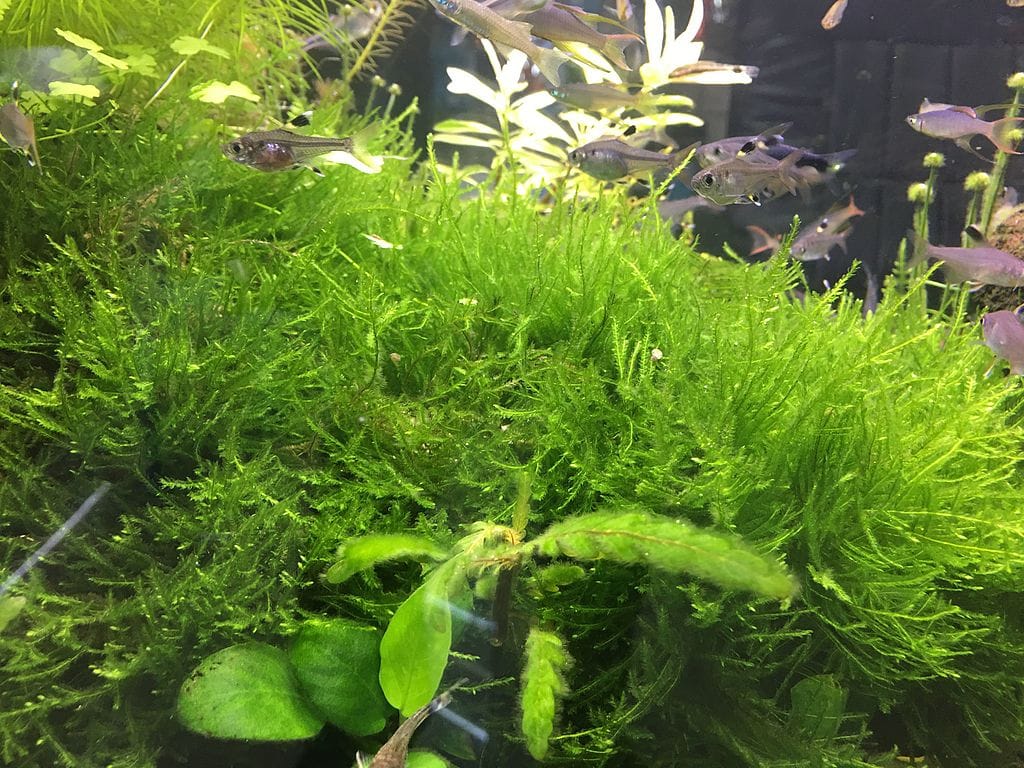
Habitat, Tank Conditions & Setup
Tank/Aquarium Size
Java moss can be grown in just about any size tank, although 5 gallons or larger is recommended due to its ability to take up large amounts of space. Tanks less than 5 gallons may be overrun with Java moss.
Water Temperature and pH
This plant can survive in water temperatures from 59–86˚F, even having been documented in water as warm as 90˚F. It grows best in water that is 70–75˚F. Java moss can survive pH from 5.0–8.0 but grows best in pH from 5.0–7.5.
Substrate
Java moss does not require a substrate. It can be used as a floating plant, as well as attaching to just about any surface. It can grow on substrates from dirt and sand to gravel and stones.
Plants
Java moss can survive across many different environments, so it can share a tank with just about any type of aquatic or semi-aquatic plant. It pairs well with plants like Java fern and Anubias.
Lighting
This plant can survive with almost no lighting, as well as in high-light environments. It grows best with moderate lighting.
Filtration
It prefers a moderate water current but will grow in low to high currents. Water filtration is not required for this plant. It can survive very poor water conditions.
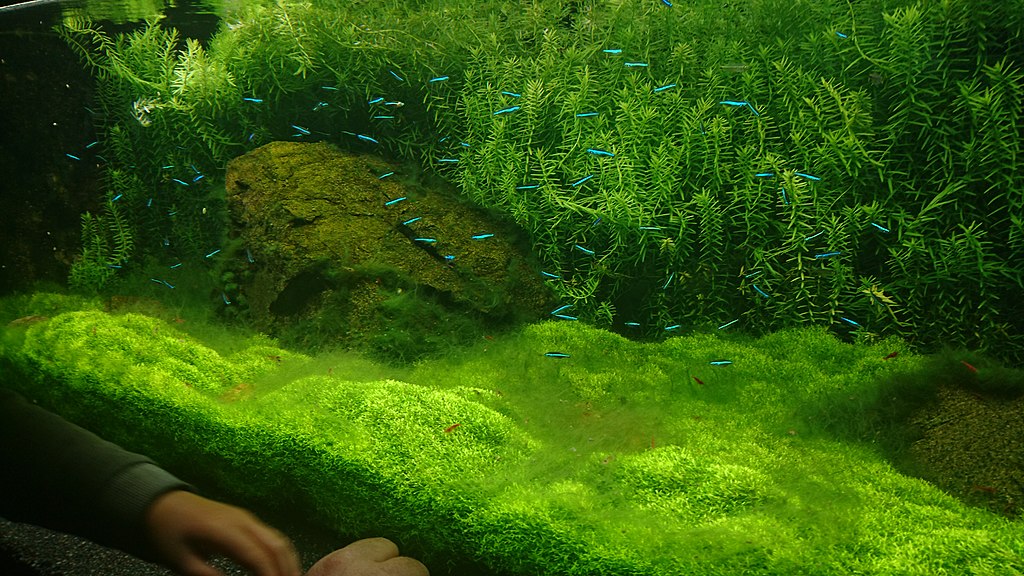
Planting Tips
While Java moss can be left to float in the tank, it grows best when attached to a surface. It has small rhizoids that attach it to surfaces with enough time, so if planted in a terrarium or vivarium, it can be set into place and will eventually attach. Underwater, it may need to be glued to the chosen surface with aquarium-safe glue. It can also be attached with a string or fishing line. Most people attach Java moss to driftwood, stones, or tank décor. It can also be used to create a moss wall within a tank.
Java moss does not have true roots, instead having rhizoids, which are root-like growths. The only purpose of rhizoids is to attach the plant to a surface, but they do not grow very deep. Java moss may easily be uprooted if rough handling occurs.
Be aware that Java moss cannot dry out! If kept in a vivarium or terrarium, ensure there is always enough moisture. If Java moss dries out it will die.
The 5 Benefits of Having Java Moss in Your Aquarium
1. Improves water quality
Java moss is a great plant for removing toxins, like nitrates and nitrites, from the water. Chemicals that are toxic to aquarium pets can provide nutrients to Java moss. Java moss can even reduce ammonia and increase oxygen levels in the water.
2. Provides shelter
Java moss is a fantastic plant to help protect fry and shrimplets from omnivorous or carnivorous tankmates, like goldfish. Some fish or invertebrates, like Kuhli loaches and shrimp, may use Java moss as a haven to rest away from tankmates.
3. Creates an “aged” look
The addition of Java moss to a tank creates a cool aesthetic, giving the tank an aged look. It makes the tank look like it has been around for decades, even if it has only been a few months.
4. Traps food
Java moss is somewhat difficult for fish like goldfish to retrieve food from, which makes it the perfect spot to trap food for smaller fish, fry, or invertebrates like shrimp who may miss out on meals because of faster or more aggressive tankmates.
5. Extremely hardy
The hardiness of Java moss makes it nearly impossible to kill under normal circumstances, even in brackish conditions and poor water quality. This means that your tank will maintain the benefit of this plant, even if other plants die off.
Concerns About Java Moss
Once you have Java moss, you have Java moss.
This plant can be exceptionally difficult to get rid of and since it can survive poor tank conditions, it will likely not die off without a lot of help. The plant’s ease of propagation means that one purchase can eventually take over your tank if not kept in check. If you think you got all of it out of your tank, it can regrow from very small pieces. So, even if you think you got it all, some of it may be hiding under substrate or décor.
Java moss has also been known to grow in undesirable places, like filter intakes. It can even grow within your filter under the right circumstances. This may cause damage to your aquarium equipment, so it needs to be monitored closely and pruned as needed to keep it away from places it should not be growing.
Conclusion
The addition of Java moss to your tank can be a fantastic way to add interest and depth to your tank.
Its easy-care nature makes it great for beginning aquarists and its ease of propagation means a small piece of Java moss can cover a large aquarium with enough time.
It can provide safety and security to your fish and invertebrates, as well as help you meet a certain tank aesthetic you have in mind.
Keep in mind, though, that Java moss can be extremely hard to get rid of and has a knack for finding hiding places. If you don’t want to be stuck with Java moss for the life of your tank, it may be a good idea to pick a less stout plant.
See Also:
- Duckweed Aquarium Plant: Care, Planting & Growing)
- Christmas Moss vs Java Moss: Which One to Choose?
Featured Image Credit: IvanaStevanoski, Shutterstock



